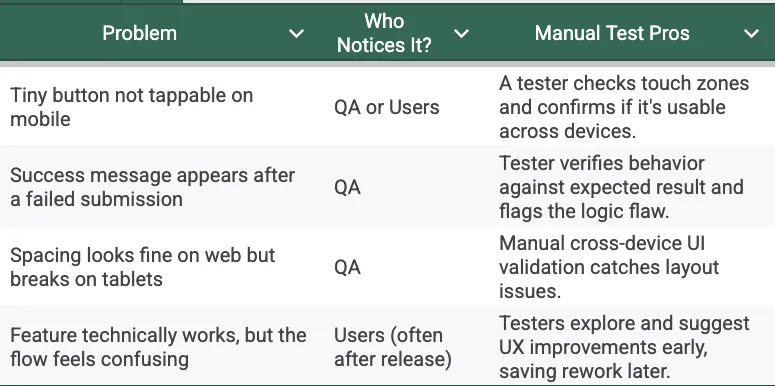Manual Testing to Brilliance
Shivprasad J.
June 12, 2025

In 2025, testing is no longer a department — it’s a shared mindset.
Whether you’re a developer, designer, product manager, or QA, the quality of the product affects all of us. And while automation tools and AI are growing, manual testing remains essential — especially for catching usability issues, validating business logic, and ensuring a smooth user experience.
In this post, I’ll explore how manual testers and other team members can work together to improve product quality — and why it’s everyone’s job.
What Manual Testers Bring to the Table
Manual testers aren’t just “clicking around” . They:
- Simulate real user journeys
- Catch visual/UI issues before users do
- Validate business workflows and data rules
- Report usability or experience flaws
- Ask “What if?” questions that automation misses
Manual testing provides a human perspective that machines can’t replace.
How Other Team Members Can Support Quality
Developers
- Share early builds with QA to start exploratory testing sooner
- Add meaningful logs and error messages for easier debugging
- Communicate known limitations to help QA focus
- Fix UI issues — not just functionality
Designers
- Involve testers in early design reviews
- Provide clear UI/UX guidelines for spacing, alignment, and color use
- Help QA understand the intent behind user flows and micro-interactions
- Use real content, not placeholder text, for better test coverage
Product Managers / Business Analysts
- Ensure requirements are clear and testable
- Work with QA to identify critical use cases and edge scenarios
- Review early feedback from testers to refine features
- Treat QA as a feedback partner — not just gatekeepers
Real-World Issues That Automation Often Misses
Here are a few practical scenarios where manual testing adds real value — often before users even notice.

Better Team Collaboration with QA
- Don’t wait until “end of dev” to test — share builds early
- Let QA attend design demos and requirement reviews
- Ask QA for usability feedback — not just pass/fail
- Encourage testers to speak up about user experience
- Share responsibility: If a bug escapes, it’s a team learning
Final Thoughts
Manual testing is evolving — but it’s not disappearing. In fact, in 2025, it’s more collaborative than ever.
When QAs, devs, designers, and PMs work together, we don’t just reduce bugs — we build better products.
Quality is a team sport. And manual testers? They’re the ones making sure the whole team wins.
